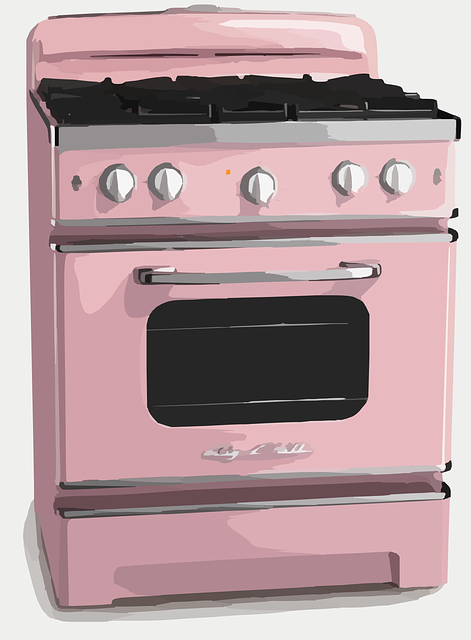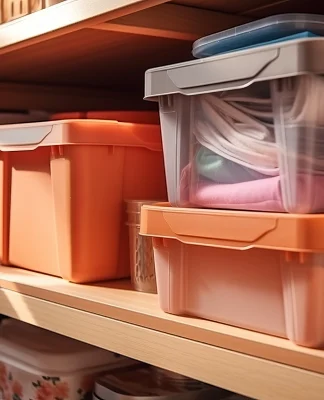Large appliances are an expensive investment. While most apartments or homes for rent come equipped with washers, dryers, refrigerators, ovens, and dishwashers, homeowners are usually required to supply their own. There are some exceptions to this, however, so it’s important to have a backup plan in case you find yourself with excess appliances or less space. To help you preserve your washers, dryers, and other kitchen appliances, consider the following self-storage tips.
Plan Strategically
Before you begin the process of storing your large kitchen appliances, it’s important to take some time to make a plan. Washers, dryers, refrigerators, ovens, heaters, and other big appliances need careful preparation and attention to detail when being put into storage. Since they take up so much space, you’ll also want to try to visualize your storage unit to create the best plan for placing them inside. While most appliances are sturdy, you shouldn’t stack anything on top of them as this can increase the risk of damage.
Make a list of everything you plan to put into storage and take measurements of each. This will help you determine what size unit you’ll need to accommodate all of your belongings. Since preparation for some appliances can take a few days to a week, try to make other accommodations for laundry, washing dishes, and storing perishable food. This will give you time to defrost, clean, and let all appliances dry before you put them into storage. Try to make plans for moving your appliances in advanced, as you’ll likely need to recruit a few people to help.
Clean Washers, Dryers, and Kitchen Appliances
A week or so before you need to put your appliances in storage, schedule time to thoroughly clean them all. Take the steps below to prepare.
Washing Machine Prep
 To clean your washing machine, run a cleansing cycle with nothing inside. Include detergent to remove any dirt buildup. If there’s detergent residue after the cleansing cycle, you can run it again on the hottest setting with four cups of vinegar. This should remove any soap buildup and give the appliance a deep clean for storage. Unplug the washing machine after the cleansing cycle. You’ll want to do this at least a week in advance to give your washing machine an adequate amount of time to properly dry. You can hand-dry the inside immediately following the cycle, but the internal parts still need time to dry on their own. This will reduce the risk of corrosion, mold, and mildew buildup during storage.
To clean your washing machine, run a cleansing cycle with nothing inside. Include detergent to remove any dirt buildup. If there’s detergent residue after the cleansing cycle, you can run it again on the hottest setting with four cups of vinegar. This should remove any soap buildup and give the appliance a deep clean for storage. Unplug the washing machine after the cleansing cycle. You’ll want to do this at least a week in advance to give your washing machine an adequate amount of time to properly dry. You can hand-dry the inside immediately following the cycle, but the internal parts still need time to dry on their own. This will reduce the risk of corrosion, mold, and mildew buildup during storage.
Dryer Storage Prep
Cleaning your dryer is a little easier. The most important thing you need to do is to remove the lint trap and clear any lingering debris. You can easily do this with your hands or use a handheld vacuum to be more thorough. Then, wash the lint trap using warm water and soap and set it aside to dry. Clean any other dust out from the inside of the dryer or connecting parts.
Refrigerator Prep
 The refrigerator is another appliance that should be prepped at least a week in advance. Begin the process by removing any perishable items and transferring them either to a cooler or an alternative fridge. Unplug the appliance and, if applicable, let the freezer defrost. Make sure that you put a towel or paper towels underneath the fridge to absorb water from the defrosting or excess moisture that seeps out of the appliance. This will help you avoid damaging your floors and reduce the time it takes to clean. When your refrigerator reaches room temperature and everything is defrosted, hand dry the inside and clean all surfaces using a mild cleanser. Keep the doors open for ventilation while things dry.
The refrigerator is another appliance that should be prepped at least a week in advance. Begin the process by removing any perishable items and transferring them either to a cooler or an alternative fridge. Unplug the appliance and, if applicable, let the freezer defrost. Make sure that you put a towel or paper towels underneath the fridge to absorb water from the defrosting or excess moisture that seeps out of the appliance. This will help you avoid damaging your floors and reduce the time it takes to clean. When your refrigerator reaches room temperature and everything is defrosted, hand dry the inside and clean all surfaces using a mild cleanser. Keep the doors open for ventilation while things dry.
Oven Storage Prep
Since a lot of food residue can build up inside the oven, it should be adequately cleaned before going into storage. If applicable, run the self-cleaning cycle on your oven about a week before you plan to transfer it into storage. This can help remove tough food stains or particles. When it’s cooled, use a dry towel or washcloth to remove any pieces of food or dust. To remove grease, spray a mixture of equal parts white vinegar and lemon juice on the surface, let it sit for about 10 minutes, then wipe it away. Finish cleaning the oven by giving it another wipe down using a gentle cleanser. Keep the door open to allow everything to properly dry.
Preparing Other Appliances
Take the same steps to prepare any other large or small appliances for storage. Do whatever you can to give them a thorough clean, remove any traces of food, dust, or residue buildup, and then give each appliance an adequate amount of time to thoroughly dry. This is important, as storing damp or dirty things can lead to moisture damage and corrosion.
Disconnecting Appliances Before Storage
While you should be unplugging appliances during the cleaning process, there are still other features that need to be disconnected before they go into storage. Prior to pulling off hoses or valves, take the time to read the manufacturer’s instructions for each appliance. This will ensure that you don’t damage items and parts are removed safely. Different brands, makes, and models tend to have different instructions, so take your time with cross checking your items and their respective manuals.
 You’ll also need to disconnect any appliance that’s hooked up to a main supply hose. Before doing this, switch off electricity breakers to avoid problems and make sure that your gas has been turned off before disconnecting your oven. This is an extremely important step to keep you safe and avoiding potentially fatal situations. You’ll also want to shut off the main water valve before disconnecting your washing machine, dishwasher, refrigerator, or any other appliance that uses water. Clearly label any parts that you remove so that you know which appliance they belong to when you get them out of storage.
You’ll also need to disconnect any appliance that’s hooked up to a main supply hose. Before doing this, switch off electricity breakers to avoid problems and make sure that your gas has been turned off before disconnecting your oven. This is an extremely important step to keep you safe and avoiding potentially fatal situations. You’ll also want to shut off the main water valve before disconnecting your washing machine, dishwasher, refrigerator, or any other appliance that uses water. Clearly label any parts that you remove so that you know which appliance they belong to when you get them out of storage.
Moving Appliances Safely
Once everything has been cleaned and given enough time to dry, start preparing your appliances for the big move. To do this safely, take the following precautions.
Secure Doors and Parts
First, make sure that all parts of each appliance are appropriately labeled and stored away. Avoid storing anything inside of the appliance and instead, keep them together in a nearby box or storage bin. Then, tape all of the doors shut using masking tape to make sure they don’t come ajar during the move and get damaged.
Use Blankets to Protect the Appliance
Next, cover the appliances with moving blankets or heavy sheets. This will help reduce the risk of damaging both the appliance and the walls in your home while you transport them to your self-storage unit.
Move Heavy Items Carefully
 Finally, take extra precaution to move washers, dryers, and other heavy kitchen appliances with care. Whenever possible, use a dolly and make sure there are people around to help guide you and provide additional support or leverage when needed. Always lift with your knees to avoid injury and if you’re uncomfortable moving heavy items, consider hiring a professional moving company to help. When using a dolly, make sure you anchor in appliances to keep them secured.
Finally, take extra precaution to move washers, dryers, and other heavy kitchen appliances with care. Whenever possible, use a dolly and make sure there are people around to help guide you and provide additional support or leverage when needed. Always lift with your knees to avoid injury and if you’re uncomfortable moving heavy items, consider hiring a professional moving company to help. When using a dolly, make sure you anchor in appliances to keep them secured.
Self-Storage Tips for Various Appliances
When you take the above precautions, you can reduce the risk of damage or injury when moving appliances into self-storage units. To keep things in good condition while in storage, open the doors slightly once placed in your unit. This helps improve ventilation in case there’s any lingering water. As mentioned, avoid storing items inside the appliance as this could lead to premature deterioration or other issues. Never plug any items in to outlets inside the storage unit and keep things covered to prevent the accumulation of dust. To help extend the lifespan of your belongings, always opt for climate-controlled storage units. This will help stabilize temperatures and humidity levels, thus reducing the risk of long-term damage.
When you need a self-storage facility that you can trust to store your washer, dryer, and other kitchen appliances, look no further than The Lock Up Self Storage. All of our units are climate-controlled and temperature-controlled, giving you the perfect year-round temperature and humidity level to keep items in the best condition possible. The Lock Up also has state-of-the-art security measures, so you can rest easy knowing your things are in good hands. Our security system includes 24/7 video monitoring, individually coded access gates, a full perimeter alarm, and motion-sensor lighting systems. With a variety of storage unit sizes and flexible leasing options, you’ll always find what you need at The Lock Up. To learn more about your local facility, or to find the perfect size self-storage unit for your appliances, call us at 1-866-327-LOCK today!



















